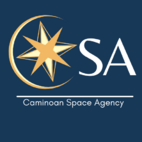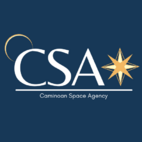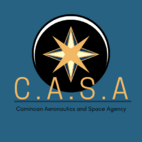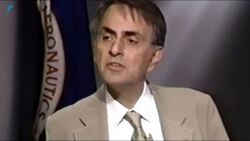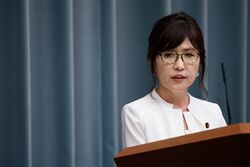Caminoan Space Agency: Difference between revisions
No edit summary |
No edit summary |
||
| (12 intermediate revisions by the same user not shown) | |||
| Line 1: | Line 1: | ||
{{Template:WIP}} | |||
{{Infobox space agency | {{Infobox space agency | ||
| name = Caminoan Space Agency | | name = Caminoan Space Agency | ||
| Line 19: | Line 21: | ||
| caption = [[CSA Main Headquarters]] in [[Hanoma City]] (SMA) | | caption = [[CSA Main Headquarters]] in [[Hanoma City]] (SMA) | ||
| acronym = CSA | | acronym = CSA | ||
| owner = [[ | | owner = [[Ministry of Science and Research]] | ||
| established = {{start date and age| | | established = {{start date and age|1977|08|08}} | ||
| headquarters = [[Hanoma City | | headquarters = [[CSA National Headquarters, Hanoma City (Main Campus)]], [[Caminoes]]/ [[Sagacity University (2nd Base)]], [[Sagacity City]], [[Caminoes]]/ [[Junior Pad (3rd Base)]], [[Nakoma City]], [[Sagacity Metropolitan Area (SMA)]], [[Caminoes]] | ||
| employees = 18,102 (July 2022) | | employees = 18,102 (July 2022) | ||
| spaceport = [[Bonbas Space Port, Justo District, Daminoa City]] | | spaceport = [[Bonbas Space Port, Justo District, Daminoa City]]/ [[Kokomo Spaceport, Nenganderi Disrtict, Daminoa City]] | ||
| motto = | | motto = | ||
| administrator = [[Sofia | | administrator = [[Sofia Toshinori]], Director-General | ||
| budget = C$30.72 | | budget = C$30.72 trillion (2022) | ||
| language = | | language = | ||
| URL = {{URL|https://csa.gov.cm}} | | URL = {{URL|https://csa.gov.cm}} | ||
}} | }} | ||
The Caminoan Sapce Agency (CSA), formerly Caminoan Aeronautics and Space Agency (CASA), is the main governmental space research and spacecraft manufacturing institute of the Caminoes, responsible for space and technological research relative to space exploration and other fields of research. The [[Caminoan Space Program]] (included in | The Caminoan Sapce Agency (CSA), formerly Caminoan Aeronautics and Space Agency (CASA), is the main governmental space research and spacecraft manufacturing institute of the Caminoes, responsible for space and technological research relative to space exploration and other fields of research. The [[Caminoan Space Program]] (included in [[The Final Frontier Act of 1976]]) is tasked with the goal of space exploration, research, aeronautics research, and other scientific inquiries related to space science. | ||
The re-structuring of the organization, that led to the re-branding as well (i.e the reduction of "Aeronautics" in the name), was a change led by the new Caminoan Commission on Space in an effort to simplify and synthesize the objective of the administration towards the "One Goal", that being the further deepening of the space knowledge through Caminoan science and technology. | The re-structuring of the organization, that led to the re-branding as well (i.e the reduction of "Aeronautics" in the name), was a change led by the new [[Caminoan Commission on Space]] in an effort to simplify and synthesize the objective of the administration towards the "One Goal", that being the further deepening of the space knowledge through Caminoan science and technology. | ||
==History== | ==History== | ||
===Establishment=== | ===Establishment=== | ||
In 1975 in a letter to parliament by renowned physicist Karl Pagan was submitted to be read by the Science Committee. The letter contained provisions and a request for special council hearing on "matters of great scientific endeavor and economic urgency" as stated in the letter. A week later the Science Committe held a special counsel for Pagan and his group of fellow scientists; famed astronomer and physicist Ledrick Blastauff and theoretical physicist Marlene Starr. Together they presented to the committee "The Final Frontier Program", a 10-page 20,500-word synthesis on the importance of the formation of a space agency, one that tackled the importance of space science in the modernization of the country, as well as its economy. | |||
The chairman of the Science Committee at that time, Audray Labrador, saw the potential of the proposal and intended to deliberate onwards with the rest of parliament in a session. She went on to take the proposal into consideration. She then met with fellow committee members on the matter, now with the intention of drafting up a bill on the project, inviting Pagan, Blastauff, and Starr as special counsel and advisory body for the first draft. After a week of the committee synthesizing the final draft, The Final Frontier Bill #10199 was made and deliberations in parliament were started. The proposal was brought up to the Kaminoa Dieta during a special session, the hearing attended by Pagan, Blastauff, and Starr as key proponents of the bill. The majority of the opposition's arguments were on the feasibility of such a large endeavor, taking on the prospect of its funding and organizational complexity, with the structure of command having to rely much on a heavily scientifically inclined body. | |||
{| class="wikitable" style="float:right; margin:0 0 1em 1em; width:100px; text-align:center; font-size:85%; border-collapse:collapse;" | |||
|+ '''''' | |||
|- | |||
| [[File:Space man.jpg|thumb|center|250px|Dir-Gen. Carl Pagan, the first CASA administrator and main founder, he served as Director-General of the agency from 1976, when it was started, all through 1996, devoting two decades of his life until his death on December 31, 1996. His tenure was the longest term for any CSA administrator, marking his the most fundamental to ushering CASA into the modern world]] | |||
|} | |||
However, after 5 months of deliberation, the bill passed its initial hearing, now having to go through the a much more oppositional phase as the second deliberations were mainly for its funding. Having to adjust the national appropriations to take into consideration the building of its organization was "a hell of a damn battle" according to Pagan. However Chairman committee Labrador went head first into the fray, releasing 3 separate drafts in 4 consecutive weeks on the budget appropriations for the proposed program. By that time the national budget appropriations bill for that fiscal year was only half-way through parliamentary deliberations, giving the The Final Frontier bill much more time to be discussed during parliamentary plenary sessions while the budget bill was being drafted, catching up with the appropriations in record time, making more leeway for the possibility of its creation regarding its massive budgetary necessities. | |||
On January 20, 1976, after the third and final deliberation, "The Final Frontier Act of 1976" was passed. Much of the discussion was aimed at the equally proportionate growth on both the economy through technology and scientific breakthrough with high economic capacity, as well as the importance of the Caminoes to catch up to the technological advances of the international community. Science Committee Chair. Audray Labrador was lauded for her fast and pro-active work on the bill, with her stating the importance of a Caminoan generation experiencing a highly technologically advanced society in their lifetime, all through science. The Caminoan Aeronautics and Space Administration was formed a month later, along with the beginning of its construction of the initial headquarters in Sagacity. The organization had two main divisions then, the Jet and Rocketry Development and Research Sector (JRDRS) headed by Ledrick Blastauff, and the Space Science Research Sector (SSRS) headed by Marlene Starr. The administration was then headed by Carl Pagan, him being the first administrator of the space agency in its history, a year later he proposed the first two main programs the agency will embark on in the next decade, the preparation for better aeronautics technology, and the preparation for the first launch of a rocket sending a satellite into low earth-orbit, breaking new grounds for the Caminoan space journey, and to beyond. | |||
===Logos=== | ===Logos=== | ||
===Past Administrations=== | ===Past Administrations=== | ||
{| class="wikitable" style="width: 35%;" | |||
|- | |||
! Year (Start-End) !! Director-General !! Term Length | |||
|- | |||
| 1976-1996 || Carl Pagan || 20 Years | |||
|- | |||
| 1996-2001 || Ricky Takana || 5 Years | |||
|- | |||
| 2001-2011 || Ángel Ruperto Evangelista ||10 Years | |||
|- | |||
| 2011-Present || Sofia Toshinori || Present | |||
|} | |||
==Management== | ==Management== | ||
===Leadership=== | ===Leadership=== | ||
The agency's main headquarters are located at Hanoma City with it being the main campus, other headquarters can be found at; Sagacity, in the campus of Sagacity University in its Intelek Building, where most technological engineering strategies are planned, the Junior Pad (name derived from its personnel made up of mostly graduate students, as this is where recruits are usually assigned) in Nakoma City, serving as its 3rd base of operations. | |||
The Director-General is selected by the [[Caminoan Science Committee]] in parliament with the advisory of the Caminoan Commission on Space (CCS). Term limits are not applied for the leadership position as it was highlighted that consistency in the focus of the administration is essential to its efficiency, the CCS on the other hand do, and once positions are open new committee members are selected by MP's in the Science Committee. | |||
The current Director General is Sofia Toshinori, appointed by [[Prime Minister Mitsuko Itou]] in February 12 2011, she was preceded by Dr. Ángel Ruperto Evangelista PhD. | |||
{| class="wikitable" style="float:right; margin:0 0 1em 1em; width:100px; text-align:center; font-size:85%; border-collapse:collapse;" | |||
|+ '''''' | |||
|- | |||
| [[File:105826919-1554164194714gettyimages-585715500.jpeg|thumb|center|250px|Dir-Gen. Toshinori has been leading the Caminoan Space Program since 2011, many of the successes of the CSA is attributed to the longevity of her leadership and her consistency.]] | |||
|} | |||
===Strategic Plan=== | ===Strategic Plan=== | ||
CSA is headed by a primary vision stated under the "One Goal" policy, suited for the FY2023. The One Goal was drafted as a bill submitted under the Science Committee with MP's; Derrick Lancaster, Hama Yamada, Talia Nyong'o, Sarah Hinterlunde, Oscar Wallis Just, and Eris Salvador as proponents. | |||
The four tenets of the One Goal were; | |||
* The expansion of knowledge for the scientific community with the ultimate beneficiary being the human race. | |||
* The betterment of economic progress, furthering growth through technological innovation and quelling economic disruptions. | |||
* The researching of sustainable means for economic and human existential growth through innovative technological ideas. | |||
* The unification of international communities through enhanced cooperation over technological and scientific advancements, in the recognition of space as the final frontier for humanity to achieve, regardless of general differences in where, what, and who you are, in the hope that through these virtues and values we achieve true victory for our species, this being The One Goal, not for the Caminoan pride, but for human pride. | |||
===Budget=== | ===Budget=== | ||
{| class="wikitable" style="width: 10%;" | |||
|- | |||
! Year !! Budget Request in tril. US$ !! Approved Budget in tril. US$ | |||
|- | |||
| 2018 || C$29.092 || C$29.936 | |||
|- | |||
| 2019 || C$31.192 || C$31.579 | |||
|- | |||
| 2020 || C$30.134 || C$30.799 | |||
|- | |||
| 2021 || C$30.134 || C$30.799 | |||
|- | |||
| 2022 || C$30.584 || C$30.721 | |||
|} | |||
===Organization=== | ===Organization=== | ||
{| class="wikitable" style="width: 10%;" | |||
|- | |||
! Mission Department !! Departmental Directors !! % of CSA Budget | |||
|- | |||
| Aeronautics Research and Development (ARDD)|| Engr. Marina Genoveva Sanz || 28% | |||
|- | |||
| Environmental Systems Research (ESRD)|| Akira Nélida Mizutani|| 14% | |||
|- | |||
| United Science (USD)|| Dr. Constanza Shinohara || 32% | |||
|- | |||
| Space Operations (SOD)|| Ruth Dominga Inaba || 17% | |||
|- | |||
| Mission Management (MMD)|| Desamparados Hutch || 4% | |||
|} | |||
===Facilities=== | ===Facilities=== | ||
===Technological Advancements=== | ===Technological Advancements=== | ||
==Active programs== | ==Active programs== | ||
====The One Goal Program==== | |||
====Human Space Flight Program==== | |||
====The Star Command Program==== | |||
====Team One Program==== | |||
====The Ouranus Program==== | |||
====The Probe-Scout Program==== | |||
====International Planetary Defense Cooperative Program==== | |||
===International Collaborations=== | ===International Collaborations=== | ||
===Future Missions=== | ===Future Missions=== | ||
==Gallery== | |||
Latest revision as of 09:56, 23 May 2023
This article is incomplete because it is pending further input from participants, or it is a work-in-progress by one author. Please comment on this article's talk page to share your input, comments and questions. Note: To contribute to this article, you may need to seek help from the author(s) of this page. |
| [[File:= clockwise from top left ( 2 of latest issued and currently used design, 2 of the former logo versions until 2015,) | |
CSA Main Headquarters in Hanoma City (SMA) | |
| Abbreviation | CSA |
|---|---|
| Formation | August 8, 1977 |
| Headquarters | CSA National Headquarters, Hanoma City (Main Campus), Caminoes/ Sagacity University (2nd Base), Sagacity City, Caminoes/ Junior Pad (3rd Base), Nakoma City, Sagacity Metropolitan Area (SMA), Caminoes |
Administrator | Sofia Toshinori, Director-General |
| Bonbas Space Port, Justo District, Daminoa City/ Kokomo Spaceport, Nenganderi Disrtict, Daminoa City | |
Parent organisation | Ministry of Science and Research |
Budget | C$30.72 trillion (2022) |
Staff | 18,102 (July 2022) |
| Website | csa |
The Caminoan Sapce Agency (CSA), formerly Caminoan Aeronautics and Space Agency (CASA), is the main governmental space research and spacecraft manufacturing institute of the Caminoes, responsible for space and technological research relative to space exploration and other fields of research. The Caminoan Space Program (included in The Final Frontier Act of 1976) is tasked with the goal of space exploration, research, aeronautics research, and other scientific inquiries related to space science.
The re-structuring of the organization, that led to the re-branding as well (i.e the reduction of "Aeronautics" in the name), was a change led by the new Caminoan Commission on Space in an effort to simplify and synthesize the objective of the administration towards the "One Goal", that being the further deepening of the space knowledge through Caminoan science and technology.
History
Establishment
In 1975 in a letter to parliament by renowned physicist Karl Pagan was submitted to be read by the Science Committee. The letter contained provisions and a request for special council hearing on "matters of great scientific endeavor and economic urgency" as stated in the letter. A week later the Science Committe held a special counsel for Pagan and his group of fellow scientists; famed astronomer and physicist Ledrick Blastauff and theoretical physicist Marlene Starr. Together they presented to the committee "The Final Frontier Program", a 10-page 20,500-word synthesis on the importance of the formation of a space agency, one that tackled the importance of space science in the modernization of the country, as well as its economy.
The chairman of the Science Committee at that time, Audray Labrador, saw the potential of the proposal and intended to deliberate onwards with the rest of parliament in a session. She went on to take the proposal into consideration. She then met with fellow committee members on the matter, now with the intention of drafting up a bill on the project, inviting Pagan, Blastauff, and Starr as special counsel and advisory body for the first draft. After a week of the committee synthesizing the final draft, The Final Frontier Bill #10199 was made and deliberations in parliament were started. The proposal was brought up to the Kaminoa Dieta during a special session, the hearing attended by Pagan, Blastauff, and Starr as key proponents of the bill. The majority of the opposition's arguments were on the feasibility of such a large endeavor, taking on the prospect of its funding and organizational complexity, with the structure of command having to rely much on a heavily scientifically inclined body.
However, after 5 months of deliberation, the bill passed its initial hearing, now having to go through the a much more oppositional phase as the second deliberations were mainly for its funding. Having to adjust the national appropriations to take into consideration the building of its organization was "a hell of a damn battle" according to Pagan. However Chairman committee Labrador went head first into the fray, releasing 3 separate drafts in 4 consecutive weeks on the budget appropriations for the proposed program. By that time the national budget appropriations bill for that fiscal year was only half-way through parliamentary deliberations, giving the The Final Frontier bill much more time to be discussed during parliamentary plenary sessions while the budget bill was being drafted, catching up with the appropriations in record time, making more leeway for the possibility of its creation regarding its massive budgetary necessities.
On January 20, 1976, after the third and final deliberation, "The Final Frontier Act of 1976" was passed. Much of the discussion was aimed at the equally proportionate growth on both the economy through technology and scientific breakthrough with high economic capacity, as well as the importance of the Caminoes to catch up to the technological advances of the international community. Science Committee Chair. Audray Labrador was lauded for her fast and pro-active work on the bill, with her stating the importance of a Caminoan generation experiencing a highly technologically advanced society in their lifetime, all through science. The Caminoan Aeronautics and Space Administration was formed a month later, along with the beginning of its construction of the initial headquarters in Sagacity. The organization had two main divisions then, the Jet and Rocketry Development and Research Sector (JRDRS) headed by Ledrick Blastauff, and the Space Science Research Sector (SSRS) headed by Marlene Starr. The administration was then headed by Carl Pagan, him being the first administrator of the space agency in its history, a year later he proposed the first two main programs the agency will embark on in the next decade, the preparation for better aeronautics technology, and the preparation for the first launch of a rocket sending a satellite into low earth-orbit, breaking new grounds for the Caminoan space journey, and to beyond.
Logos
Past Administrations
| Year (Start-End) | Director-General | Term Length |
|---|---|---|
| 1976-1996 | Carl Pagan | 20 Years |
| 1996-2001 | Ricky Takana | 5 Years |
| 2001-2011 | Ángel Ruperto Evangelista | 10 Years |
| 2011-Present | Sofia Toshinori | Present |
Management
Leadership
The agency's main headquarters are located at Hanoma City with it being the main campus, other headquarters can be found at; Sagacity, in the campus of Sagacity University in its Intelek Building, where most technological engineering strategies are planned, the Junior Pad (name derived from its personnel made up of mostly graduate students, as this is where recruits are usually assigned) in Nakoma City, serving as its 3rd base of operations.
The Director-General is selected by the Caminoan Science Committee in parliament with the advisory of the Caminoan Commission on Space (CCS). Term limits are not applied for the leadership position as it was highlighted that consistency in the focus of the administration is essential to its efficiency, the CCS on the other hand do, and once positions are open new committee members are selected by MP's in the Science Committee.
The current Director General is Sofia Toshinori, appointed by Prime Minister Mitsuko Itou in February 12 2011, she was preceded by Dr. Ángel Ruperto Evangelista PhD.
Strategic Plan
CSA is headed by a primary vision stated under the "One Goal" policy, suited for the FY2023. The One Goal was drafted as a bill submitted under the Science Committee with MP's; Derrick Lancaster, Hama Yamada, Talia Nyong'o, Sarah Hinterlunde, Oscar Wallis Just, and Eris Salvador as proponents.
The four tenets of the One Goal were;
- The expansion of knowledge for the scientific community with the ultimate beneficiary being the human race.
- The betterment of economic progress, furthering growth through technological innovation and quelling economic disruptions.
- The researching of sustainable means for economic and human existential growth through innovative technological ideas.
- The unification of international communities through enhanced cooperation over technological and scientific advancements, in the recognition of space as the final frontier for humanity to achieve, regardless of general differences in where, what, and who you are, in the hope that through these virtues and values we achieve true victory for our species, this being The One Goal, not for the Caminoan pride, but for human pride.
Budget
| Year | Budget Request in tril. US$ | Approved Budget in tril. US$ |
|---|---|---|
| 2018 | C$29.092 | C$29.936 |
| 2019 | C$31.192 | C$31.579 |
| 2020 | C$30.134 | C$30.799 |
| 2021 | C$30.134 | C$30.799 |
| 2022 | C$30.584 | C$30.721 |
Organization
| Mission Department | Departmental Directors | % of CSA Budget |
|---|---|---|
| Aeronautics Research and Development (ARDD) | Engr. Marina Genoveva Sanz | 28% |
| Environmental Systems Research (ESRD) | Akira Nélida Mizutani | 14% |
| United Science (USD) | Dr. Constanza Shinohara | 32% |
| Space Operations (SOD) | Ruth Dominga Inaba | 17% |
| Mission Management (MMD) | Desamparados Hutch | 4% |
